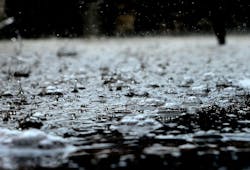NCPC-SA Introduces Water Tools & Guides to Assist in Efficient Industrial Water Use
With water scarcity and a need to conserve water being topical across the world, the National Cleaner Production Centre South Africa’s (NCPC-SA’s) Water Efficiency Online Workshop, held on February 17, was oversubscribed.
The workshop covered easy-to-use tools and guides developed by the NCPC-SA alongside their partners, the International Finance Corporation (IFC) and the Council for Scientific and Industrial Research (CSIR) Water Research Centre.
The NCPC-SA facilitates the transition of South African industry to an inclusive, low carbon and climate-resilient economy through programs such as the Industrial Water Efficiency (IWE) project, which contributes to the sustainable transformation of industrial water use practices.
The workshop, which introduced several water tools for the benefit of businesses and the environment, was recorded to allow access by any company who was not able to attend.
Water Efficiency Sector Guide
The Water Efficiency Sector Guide is an “easy-to-follow toolkit that will help companies to decrease their company water footprint and increase profitability, as well as sustainably within the company," according to NCPC-SA project manager Lindani Ncwane, who presented at the workshop earlier this month.
This guide, he explains, presents five recommendations to achieve this, namely stopping water losses and improving housekeeping, operational change, recovering condensate, reusing water and harvesting rainwater.
While the NCPC-SA study focuses on the agro-processing sector, these recommendations are relevant to, among others, the energy, agriculture, mining, manufacturing, industrial and forestry sectors.
Water Assessment Guide
The NCPC-SA and the CSIR Water Research Centre co-developed a Water Assessment Guide, which was presented by the CSIR Water Research Centre representative, Rhulani Shingwenyana.
Following a well-defined method to reduce freshwater use is a step forward towards a successful sustainable organization, as the NCPC-SA and CSIR believe that this may also reduce the costs of electricity and gas bills, provide better operational efficiency and save on wastewater discharge costs.
The water assessment guideline therefore outlines a systematic methodology to assist organizations to conduct audits for their facilities through in-house or externally appointed water champions.
A water-use assessment, which involves the process of characterizing all uses of water on a site, is an important first step toward understanding both a facility’s water use and what can be done to manage it, Shingwenyana explains.
For example, the guideline may be used to determine the amount of water lost from a distribution channel owing to leakage, storage overflows or meter malfunctions. For an assessment, a methodology is followed to trace the water use from its first point of entry into the facility, its use within the facility, through to its discharge into a sewer.
The assessment then identifies and quantifies unaccountable water losses and possible leaks and serves as an important step towards improved water conservation and water efficiency.
Shingwenyana, however, adds that it provides facility managers or executives with a road map of potential savings, as well as implementation costs.
“A water assessment should examine water quality for the different sinks in the facility. Some of the biggest gains from a water assessment are the recycling of water or augmentation of demand with rain/storm water,” the NCPC-SA’s guide explains.
Water Monitoring & Metering Guide
Funded by the IFC, the Water Monitoring and Metering Guide is able assist in the compilation of balances and assist companies with metering and measuring their water consumption levels.
The guide will be finalized by the end of March 2022 and will cover the quality of steam and water systems, as well as electrical systems and touch base on effluent systems.
The idea, explains NCPC-SA expert and resource efficiency consultant Darrin McComb (who co-developed the Water Monitoring and Metering Guide) is for the guide to align with international standards and assist users in developing a plan to address concerns surrounding the quality and metering of water.
Water Management Tool
Following the implementation of the various NCPC-SA guides, a facility can make use of their water management tool.
The tool, shares NCPC-SA project manager Brent Goliath, is a qualitative tool used to identify water losses, and assists companies to keep track of water losses at various times within a production process.
The tool, developed in an Excel-format sheet, allows multiple users to access the same data set, which is populated by the user selecting alternate drop-down options and windows, from where the user selects the option most relevant to the current need.
The resultant information is then populated accordingly, allowing for easy access for future use, if it is to solve a potential issue, or even be aware of the information.
All these tools are available at no cost and with no obligation from the NCPC-SA website.
Provision of such support tools is part of the NCPC-SA’s mandate as a national government-funded support program, the organization states.
